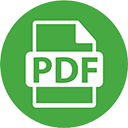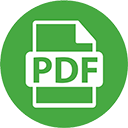15E Health and Social Care Issue – Poverty
Highlights:
1. Concepts of poverty
Absolute Poverty
- minimum subsistence – being inadequate to afford a bundle of goods and services that are regarded as essential to the physical need of an individual or a family
Relative Poverty
- a person’s income is much lower than others in the population, so he/ she has not enough money to support a certain standard of living or
- a person has less than others in society
2. Tools for Defining Poverty
Poverty Line
- Indicating the minimum standard of that are regarded as essential to the physical needs of an individual or a family
- Limitation: assets are not taken into account and this may overstate the number of people living in poverty
Budget Standards Methods
- Based on the notion of a basket of goods and services, having the elements of “subsistence” and “basic minimums for social lives”
- Limitation: only measure the proportion of expenditure on necessities, not reflect the access to resources and opportunities in social, cultural and political activities
Income Proxy Measures
- The proportion of expenditure on necessities based on the consumption patterns
- Limitation: only measure the proportion of expenditure on necessities, not reflect the access to resources and opportunities in social, cultural and political activities
Proportion of Median Income
- People with income lower than a proportion of the median income (e.g. 50%) are regarded as living in poverty
- Limitation: only measure income, not reflect the individual’s ability to participate in the everyday life of a society / assets are not taken into account
3. Income Gap
Gini Index /Gini coefficient /Gini ratio
- Measures the inequality of income distribution of individuals or families
Limitations
- It does not measure “property” or “investment income” possessed by people, but measures the “salary” only
4. Causes of Poverty
Global
- Economic ups and downs – unemployment due to global financial crisis
- Natural disasters
- Wars
National
- Governance – corruption; ineffective / lack of policies for alleviating poverty
- Social Inequality – some individuals are placed in the deprived social condition due to gender, races, ethnic groups and social classes
- Unemployment due to the shift of labour market – e.g. from low-skilled to high-skilled
Community
- Lack of job vacancies available in the community
- Lack of social service and support available for some disadvantaged groups to enable them to seek job in labor market, e.g. child care service
Individual
- Less incentive to work
- Disease and disability
5. Approaches in Alleviating Poverty
Need-based
- Uses direct aids and tangible services to meet the needs of the poor
- e.g. Comprehensive Social Security Assistance (CSSA)
Asset-based
- Aims to help the poor to build assets, which include capital assets and capacities
- e.g. Child Development Fund (CDF)
6. International Organisations
World Bank
- Related Strategies : To provide financial and technical assistance to develop infrastructure / create job opportunities
- Examples : Low-interest loans, interest-free credit and grants
International Monetary Fund (IMF)
- Related Strategies : To provide temporary financing to support policies aimed at correcting the
underlying problems - Examples : Loans to low-income countries
Reading:
Application:
Tasks & Worksheets
Coming Soon
Assessing my learning
- What does poverty mean?
- What are the causes of poverty?
- How can we deal with poverty?





